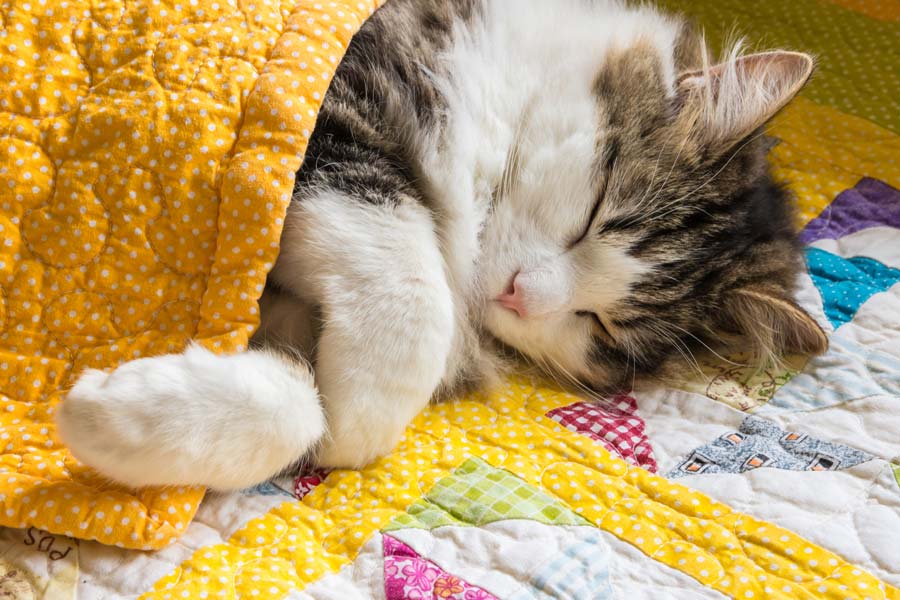FATE: A Devastating Condition in Cats

Few things are as devastating and stressful as a cat-owner as realizing your kitty is in severe pain and can't use the rear legs anymore. Learn more about the condition of saddle thrombus in cats.
What Is Feline Aortic Thromboembolism?
Also called FATE, ATE, or saddle thrombus, feline aortic thromboembolism is a serious side effect of hypertrophic cardiomyopathy (HCM) in some cats. In fact, about 25% of cats that have HCM—a cardiac condition in which the walls of the heart become thickened—will suffer from a saddle thrombus at some point.
Generally, during this condition, a blood clot forms in the heart and then breaks free from there, traveling through the circulation until it becomes lodged and blocks blood flow. The most common point for the lodge to happen is where the aorta splits into two arteries to supply blood to the back legs. That spot is known as the saddle, and when a large blood clot lodges there, it causes lack of blood flow and subsequent paralysis to the rear limbs.
The rear legs of a cat with a saddle thrombus become cold, and muscles and nerves swell due to lack of oxygen, causing severe pain.
The reason clots form in the heart of a cat with HCM in the first place is because of inefficient pumping of the heart. Blood tends to pool and stagnate in the upper left heart chamber, and that is where clots may form.
Signs of FATE
The signs of saddle thrombus come on extremely suddenly. One moment, the kitty is fine, and the next, the clot has lodged and decreased blood flow causes pain. The main signs include:
- Inability to use the back legs or severe decrease in their function.
- Difficult or labored breathing.
- Crying, screaming, and yowling.
- Panting.
Upon examination, a veterinarian will also find:
- Decreased or absent pulses in one or both rear legs.
- Cold rear legs and paws.
- Hard, painful muscles in the back legs.
- Irregular heart rhythm or fast heart rate.
- Blue-tinged paw pads or nail beds.
- Abnormal lung sounds.
FATE is extremely painful and is a medical emergency in cats. If your kitty is suddenly unable to use one or both back legs, get to your veterinarian or a veterinary emergency clinic as soon as possible.
Diagnosis of Saddle Thrombus in Cats
FATE is usually diagnosed based on a physical exam. Some testing that can help confirm the diagnosis includes:
- Blood work.
- Chest x-rays to evaluate the size and shape of the heart (helpful in diagnosing the causative HCM).
- Doppler to verify decreased or absent blood flow in the rear legs.
- Echocardiogram (ECG) to evaluate for heart disease.
FATE Treatment
Treatment of saddle thrombus must first address pain. Your vet will give pain medication to your kitty right away. Strong, morphine-derived pain killers are required. Sometimes, it's difficult to control the pain.
Intravenous fluids are given to help prevent or treat circulatory shock, and the kitty is confined to cage rest.
Lots of nursing care is required to keep the kitty clean, dry, and turned over regularly.
Heart medications and diuretics are given to treat the underlying heart condition.
Medication is used to attempt to prevent further clot formation.
Prognosis of Feline Saddle Thrombus
The prognosis for a cat with FATE is guarded to poor. The less severe the paralysis is, the better the chance of recovery, but the underlying heart disease will still be present and progressive. Cats that experience one blood clot are incredibly likely to go on to have more, so recurrence is quite likely.
If the blood clot does not begin to dissolve, the pain remains, and euthanasia is often considered.
Prevention of FATE
Preventing FATE is not easy. If a cat has HCM, saddle thrombus might occur anytime. One problem is that HCM is often "silent" in cats, which means there are no signs of it, including a heart murmur, until a serious complication like saddle thrombus, congestive heart failure, or sudden death occurs.
In cats with known HCM, it's possible that early treatment of the heart condition itself may decrease the risk of FATE, but that's not known with certainty.
For cats with HCM and an enlarged left atrium, some veterinary cardiologists use blood thinners in an attempt to decrease the risk of FATE. However, this should only be done on a veterinarian's orders because the side effects of those medications can be serious.




